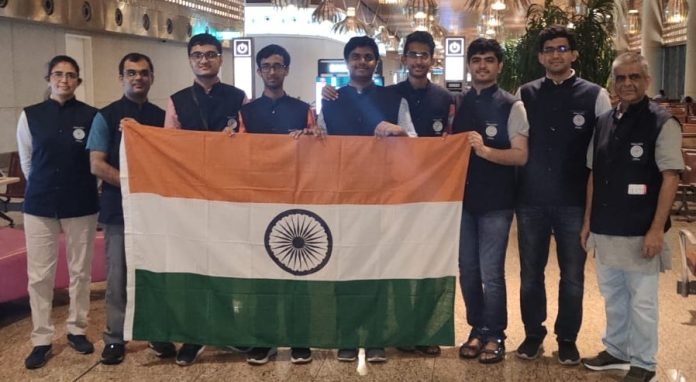India finishes third rank with 3 gold & 2 silver medals at Astronomy and Astrophysics Olympiad
Total Views |
Kutaisi (Georgia), Aug 23: India finished 3rd in the medal tally with 3 golds and 2 silver medals at the 15th International Olympiad on Astronomy and Astrophysics (IOAA). The Olympiad was held from August 14 to 21, 2022 in Kutaisi, Georgia.
A total of 209 students from 37 main and 6 guest teams participated in this year’s IOAA. Furthermore, 24 students from 6 countries participated in the online mode. This year’s competition was originally scheduled to be held in Kyiv, Ukraine, however, it was shifted to Kutaisi, Georgia in March 2022 due to the political situation of unrest in Ukraine.

Team India consisted of Chandigarh’s Raghav Goyal, Kolkata’s Md Sahil Akhtar, Hyderabad’s Mehul Borad who bagged one Gold medal each. Meanwhile, Ghaziabad’s Malay Kedia and Indore’s Atharva Nilesh Mahajan clinched the Silver medals. The team was accompanied by two leaders – Prof. Sarita Vig (Indian Institute of Space Science and Technology, Thiruvananthapuram), Prof. Ajit Mohan Srivastava (Institute of Physics, Bhubaneswar), and two Scientific Observers – Dr Shriharsh Tendulkar (Tata Institute of Fundamental Research, Mumbai) and Tejas Shah (Fr. Agnel Multipurpose School & Jr. College, Navi Mumbai).
In the medals tally, India was placed jointly in the third position along with Singapore, behind Iran’s official team (5 golds) and guest team (4 golds, 1 silver). Overall, 28 gold, 38 silver and 55 bronze medals were awarded at this year’s IOAA. Raghav Goyal won a special prize for the best solution to the most challenging theoretical question.
15th International Olympiad on Astronomy and Astrophysics
An international competition for high-school students, the International Olympiad on Astronomy and Astrophysics is on the lines of the other International Science Olympiads. It covers the fields of Astronomy and Astrophysics. The Participating students solve theoretically, data analysis, and observational problems individually and in teams under controlled and timed conditions over a period of time.
Problem tasks are set by the local organizers, verified by the team leaders of the participating countries, and presented to the participating students in their own languages. The problems are designed to reflect current astronomical knowledge and test the students’ abilities. Apart from this, each event includes cultural and social occasions and excursions designed to widen the students’ experience.
In the contest, each participating country consists of up to 5 students and up to 2 adult team leaders. during the event. This year’s competition consisted of the theoretical paper on topics such as circumbinary planets, mechanics of co-orbital satellites, accretion around compact objects, the Dyson sphere, protoplanetary disks, expanding nebulae and relativistic beaming.

